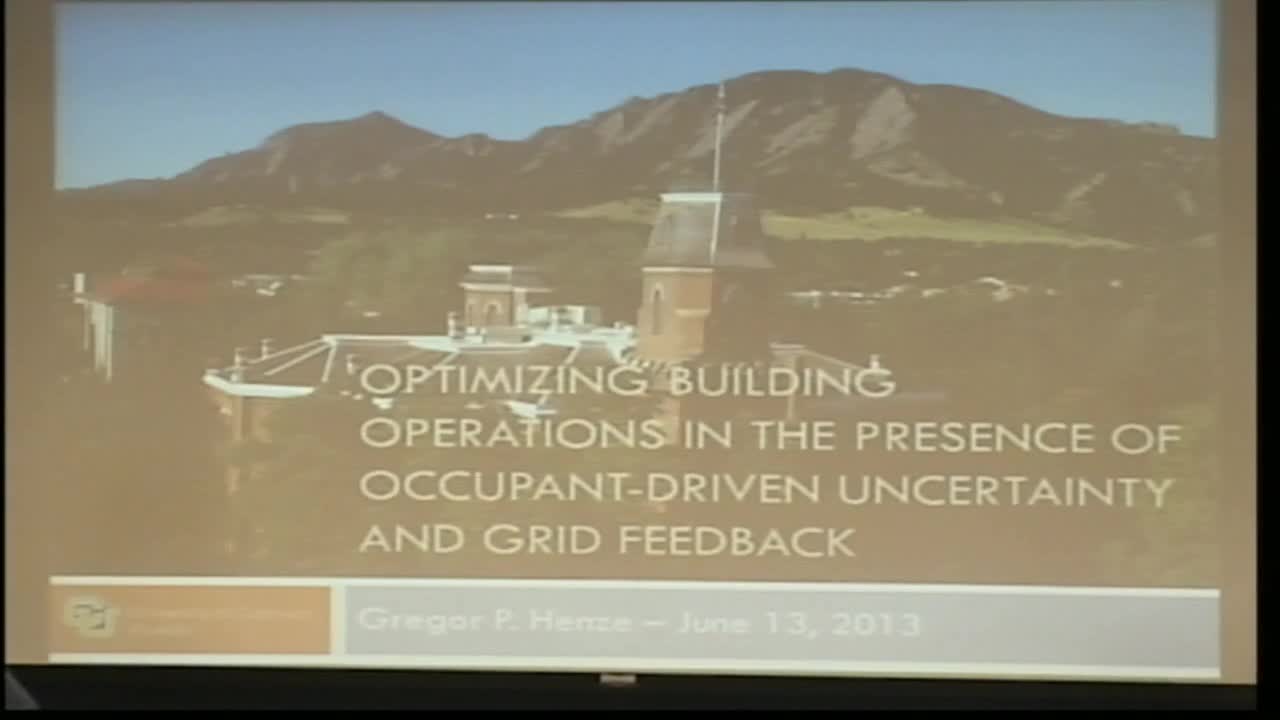Optimizing Building Operations in the Presence of Occupant-Driven Uncertainty and Grid Feedback
Presenter
June 13, 2013
Keywords:
- Stochastic Optimal Control
MSC:
- 93E20
Abstract
This talk describes currently ongoing work related to optimal building control in which a range of computational challenges have to be addressed
a) Stochastic Optimal Control of Mixed Mode Buildings Considering Occupant-Driven Uncertainty
In the first part of this presentation, we present a methodology for determining viable control rules for commercial building systems that account for occupant driven uncertainty. The methodology consists of three steps; first, offline stochastic model predictive control (SMPC) utilizing detailed building simulation models is used to determine optimal setpoint schedules. Second, the optimal SMPC results are used to inform a machine learning algorithm for rule extraction, specifically a classification and regression tree (CART). Third, the CART model results are refined and transformed into readable building automation system (BAS) code. A representative set of results are provided to illustrate the approach.
b) Distributed Residential HVAC Model Predictive Control for Load Prediction and Peak Demand Management
In the second part, we turn to residential building control. Within the past few years, in-home internet gateways and smart thermostats have become the technology standard for residential demand-side management of electric loads though utility sponsored demand response (DR) programs. At the same time, the computational power of these devices has increased to a point that these devices are able to learn the physical characteristics of a home and perform complex energy simulations. In the near future, these devices may obviate the need for traditional demand response for managing residential HVAC electric load, replacing it instead with highly distributed network of load predicting and optimizing systems using model predictive control techniques. We discuss a simulation environment coupling electric grid modeling software with distributed, residential MPC 'agents' based on inverse gray box models that respond to grid signals and optimize operation in order to achieve a particular utility objective. Initial results on the impact to grid operation and stability will be discussed.
